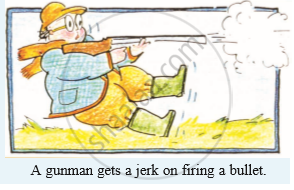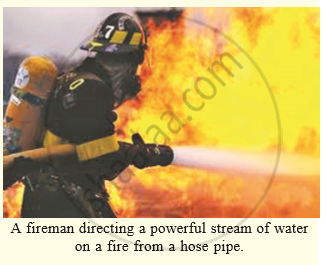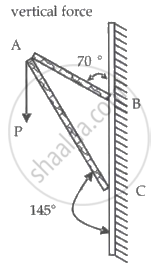Advertisements
Advertisements
प्रश्न
Explain how a rocket works.
उत्तर
The hot gases, produced by the rapid burning of the fuel, rush out of a jet at the bottom of the rocket at a very high speed. The equal and opposite reaction force of the downward going gases pushes the rocket upwards. A rocket can propel itself even in vacuum because it does not require air for obtaining uplift or for burning its fuel.
APPEARS IN
संबंधित प्रश्न
According to the third law of motion, when we push on an object, the object pushes back on us with an equal and opposite force. If the object is a massive truck parked along the roadside, it will probably not move. A student justifies this by answering that the two opposite and equal forces cancel each other. Comment on this logic and explain why the truck does not move.
Fill in the following blanks with suitable words :
Forces in a Newton’s third law pair have equal _____________ but act in opposite _____________.
Why does a gunman get a jerk on firing a bullet ?
If action is always equal to reaction, explain why a cart pulled by a horse can be moved.
Do action and reaction act on the same body or different bodies ? How are they related in magnitude and direction ? Are they simultaneous or not ?
State Newton’s third law of motion and give two examples to illustrate the law.
Give a scientific reason.
Even though the magnitudes of action force and reaction forces are equal and their directions are opposite, their effects do not get cancelled.
Give scientific reasons.
It is easier to stop a tennis ball as compared to a cricket ball when both are travelling with the same velocity.
While catching a cricket ball the fielder lowers his hands backwards. Why?
Consider a frame that is made up of two thin massless rods AB and AC as shown in the figure. A vertical force `vec"P"` of magnitude 100 N is applied at point A of the frame.

Suppose the force is `vec"P"` resolved parallel to the arms AB and AC of the frame.
The magnitude of the resolved component along the arm AC is xN.
The value of x, to the nearest integer, is ______.
[Given: sin(35°) = 0.573, cos(35°) = 0.819, sin(110°) = 0.939, cos(110°) = –0.342]
